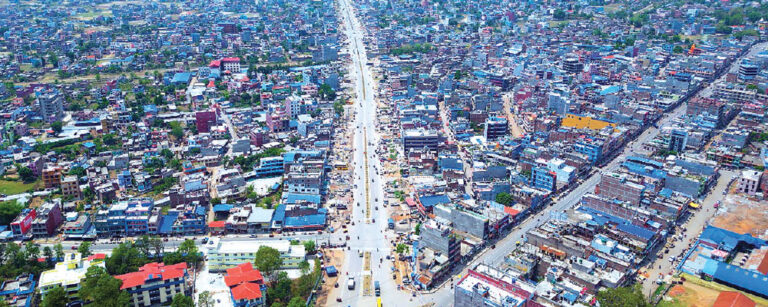An Enchanting Trek Beyond the Trails
Manang, often lauded as a trekker’s dream, is so much more than its famed trails. Tucked away in the majestic Himalayas, the district has whispers of ancient tales, vibrant cultures, and untouched natural wonders that many overlook. Journey with us as we go beyond the beaten path.
Manang Unveiled: The Jewel of Gandaki Pradesh
Nestled in the heart of the Gandaki Pradesh of Nepal, Manang isn’t just a district—it’s an experience. It’s a vivid canvas painted with towering mountains, whispering rivers, and valleys that seem to tell stories from millennia past.
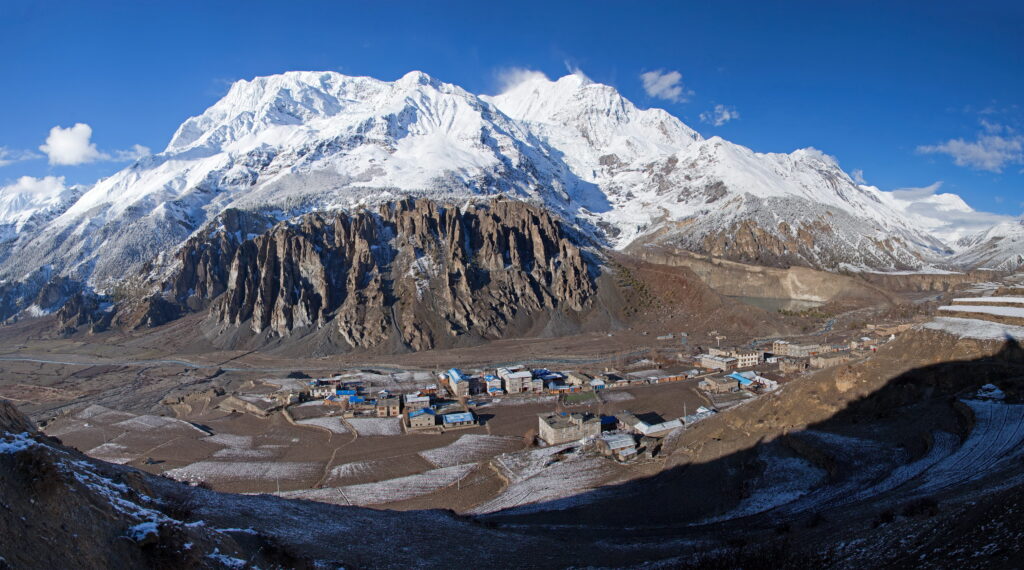
The Geographical Masterpiece
Flanked by districts such as Mustang to the west, Kaski, Lamjung and Myagdi to the southand Gorkha to the east, where itshare international border with China to north. Manang is uniquely positioned to offer some of the most breathtaking landscapes in Nepal. These aren’t just any mountains; they are part of the majestic Annapurna ranges. These snow-capped giants stand as sentinels, guarding the secrets of Manang and offering trekkers and mountaineers challenges and vistas that remain etched in memory for a lifetime.
The Alpine Whisperer: Manang’s Climate
Thanks to its elevation, Manang enjoys what’s classified as an alpine climate. But that’s just the meteorological term. For those who visit, the climate feels like a crisp embrace. Days can be pleasantly warm, allowing for comfortable exploration, while nights introduce a chilly allure, making campfires and local tea experiences to cherish. The winters paint the landscape white, offering a completely different, yet equally mesmerizing, view of the district.

More than a Name: The Etymology of Manang
Digging into the name ‘Manang’ is akin to flipping through ancient pages of history. The term finds its origins in the Tibetan word ‘Monang’, a nod to the deep-rooted Tibetan influences that have shaped the region’s culture, traditions, and even its trade routes. This Tibetan connection isn’t just historical; it’s alive and thriving, visible in the monasteries, the prayer flags fluttering in the wind, and heard in the chants of monks that echo in the valleys.
Manang isn’t just a destination; it’s a journey into a world where nature and culture intertwine seamlessly. Whether you’re tracing the etymology or gazing at the towering peaks, Manang beckons with a promise of discovery—of the land, its stories, and perhaps, a bit of oneself.
The Heartbeat of Manang: Echoes of a Rich Tapestry
In the shadow of the towering Himalayas, amidst valleys carved by ancient glaciers, lies Manang—a district pulsating with life and culture. While its landscapes are breathtaking, it’s the people of Manang who truly define its spirit.
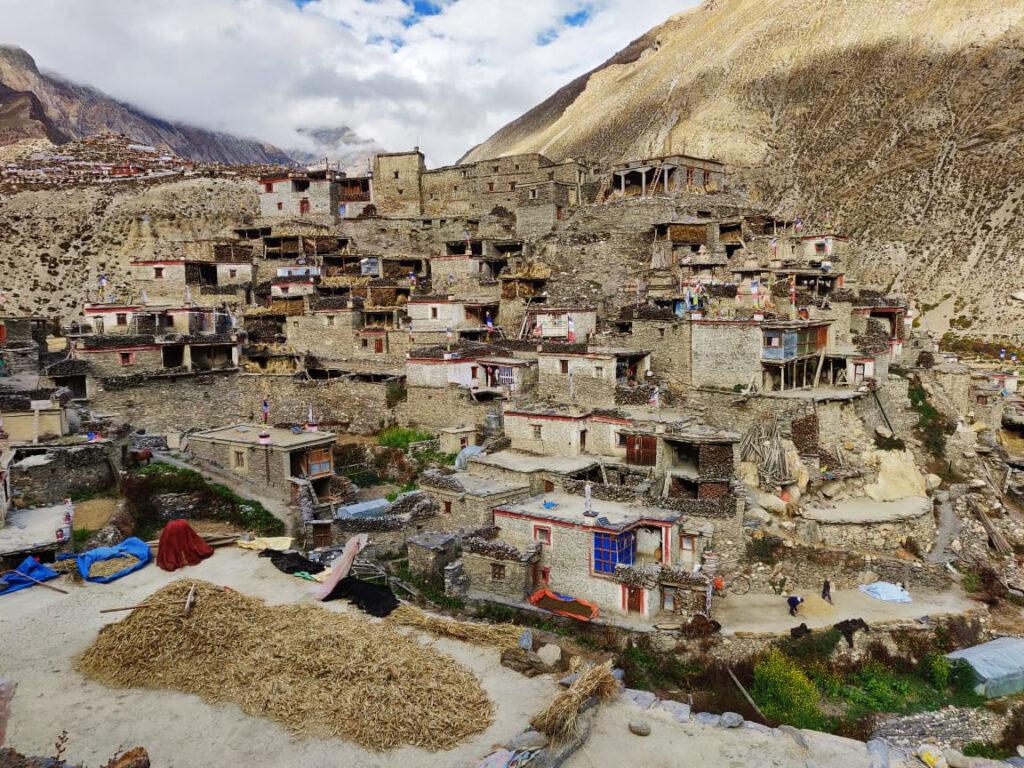
The Cultural Mosaic: Gurung and Tamang Communities
At the core of Manang’s demographic are the Gurung and Tamang communities. These ethnic groups not only shape the district’s societal framework but also paint its cultural canvas. With customs and traditions passed down through generations, they stand as living testaments to Manang’s rich heritage. Their festivals, dances, and songs reverberate with the harmonies of time, telling tales of ancestors, gods, and the very mountains surrounding them.
Languages: More Than Just Words
While Nepali might be the lingua franca, the dialects of Manang resonate with history and identity. From the nuances of Gurung speech to the melodic flow of Tamang, these languages are more than just communication tools—they are threads weaving the social fabric of the district. And while modernity has made its mark, the commitment to ancestral tongues remains steadfast, a bridge to the past.
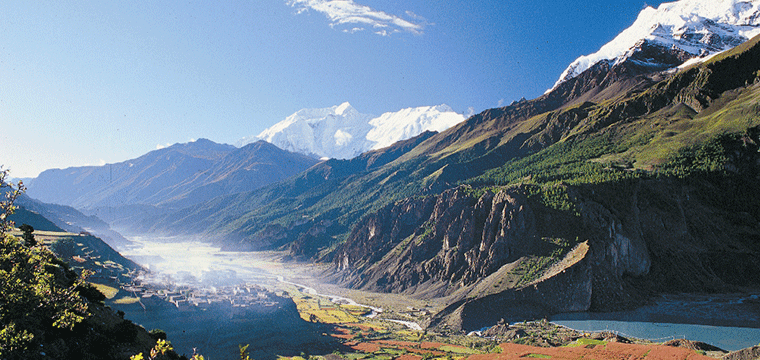
Faith and Spirituality: Hinduism and Buddhism
Religion in Manang isn’t just a belief; it’s a way of life. Temples and monasteries dot the landscape, echoing with prayers and chants that rise to meet the Himalayan skies. The intertwining of Hinduism and Buddhism creates a unique spiritual blend. Festivals from both religions are celebrated with fervor, emphasizing unity in diversity. Whether it’s the vibrant Tihar or the serene Buddha Purnima, Manang’s calendar is marked with moments of reflection and celebration.
Education: Lighting the Lamp of Literacy
Despite its remote location, Manang stands as a beacon of educational progress. With a notably high literacy rate, it’s evident that the district values the power of knowledge. Schools, some even aided by international organizations, ensure that the youth of Manang are equipped not just for their local environment but for the global stage as well.

Steering the Ship: Governance in Manang
The epicenter of Manang’s administrative machinery is Chame. From this strategic location, decisions impacting the lives of the district’s inhabitants are made. Local governmental bodies, such as the Nason Rural Municipality and Narphu Village, play pivotal roles in infrastructure development, education, healthcare, and cultural preservation. These pillars of governance ensure that while Manang remains rooted in its traditions, it also marches forward into the future.
Manang’s Crown Jewels: A Voyage Through the Unforgettable
Manang’s reputation among trekkers is undeniable, largely due to the famed Annapurna Circuit. However, beyond the well-trodden paths, lie destinations that evoke wonder and tranquility in equal measure.
Gangapurna Lake: The Mesmerizing Blue Oasis
At the heart of Manang’s enchanting landscape is Gangapurna Lake, often described as a ‘turquoise gem’ cradled amidst the towering peaks. The lake owes its radiant blue hue to the glacial melts from the Gangapurna mountain. As sunlight dances upon its waters, the shimmering reflections create an ethereal tableau against the stark snow-clad backdrop. The journey to the lake is itself a sensory delight, winding through alpine meadows and aromatic rhododendron forests. Adding to its allure, nearby you’ll find viewpoints that offer panoramic vistas, especially during sunrise and sunset when the sky paints itself in hues of gold and crimson.

Manang Village: A Tapestry of Tradition
Often dubbed as the cultural heart of the district, Manang Village is more than just a stopover for trekkers; it’s a portal to a world where traditions reign supreme. Wander through its narrow alleys, and you’re instantly greeted by stone-built homes, fluttering prayer flags, and the distant hum of Buddhist chants. Every corner has a tale, from ancient monasteries to bustling local markets where handicrafts and indigenous herbs are sold. The community here is known for its warm hospitality. A stay in one of the local teahouses, sipping on butter tea while listening to age-old tales, is an experience that imprints on one’s soul.
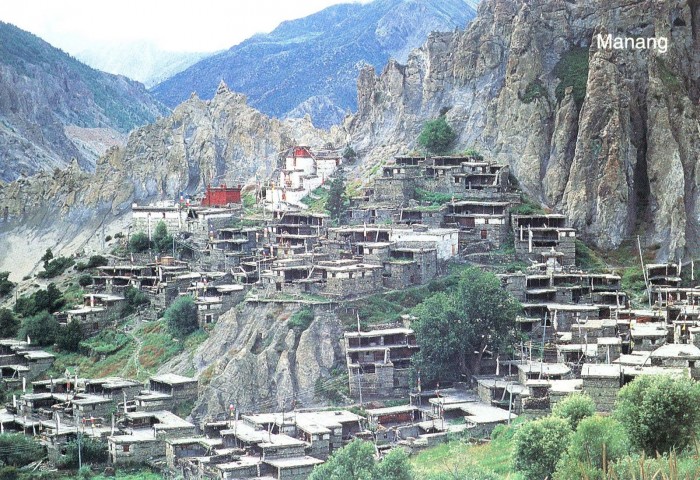
Tilicho Lake: The Serene Sentinel
Perched at a staggering altitude, Tilicho Lake is not just one of the highest lakes in the world, but also a haven of tranquility. The journey to Tilicho is for the brave-hearted, demanding but equally rewarding. As you navigate the rugged trails, the sight of the cerulean waters set against the backdrop of stark mountainscapes feels surreal. The lake, surrounded by snow even during warmer months, emanates an otherworldly calm. It’s a place where time seems to stand still, and the only sound you’ll hear is the whisper of the cool mountain breeze and the rhythmic beat of your own heart.

Manang’s Unsung Corners
Beyond the globally recognized trails and the well-documented attractions, Manang holds secrets waiting to be unearthed. These are the uncharted meadows, the secluded monastic caves, the pristine brooks, and the quaint hamlets where time seems to have paused. It’s in these unsung corners that one truly experiences the essence of Manang, away from the touristy hustle, in the company of locals who wear their heart on their sleeves and tales of yore that echo in the silence.

Conclusion
Manang, often hailed for its trekking circuits, is so much more than just pathways through the mountains. It’s about the stories whispered by the winds over Gangapurna, the cultural pulse in the heart of Manang Village, and the silent, awe-inspiring majesty of Tilicho. Each destination, a treasure trove of experiences, beckons travelers with the promise of memories that last a lifetime.
FAQs
Spring (March to May) and autumn (September to November) are ideal.
Though remote, it’s well-connected by roadways and local transportation.
Absolutely! From homestays to lodges, there’s a range for every traveler.
While not mandatory, picking up a few local words can enhance your experience.
Respect local traditions, especially in religious places. Always ask before taking photos.
If you know any more places where we can visit or any other information then feel free to comment or message us.
To read about different places visit thesandeshneupane.com you can find article in Nepali language here.
Watch videos of different places on YouTube channel named as THE SANDESH NEUPANE or click here.
All the photo copyright to the respective owner. For any querry or anything related to copyright mail me with proof at sandesh@thesandeshneupane.com or admin@thesandeshneupane.com .






